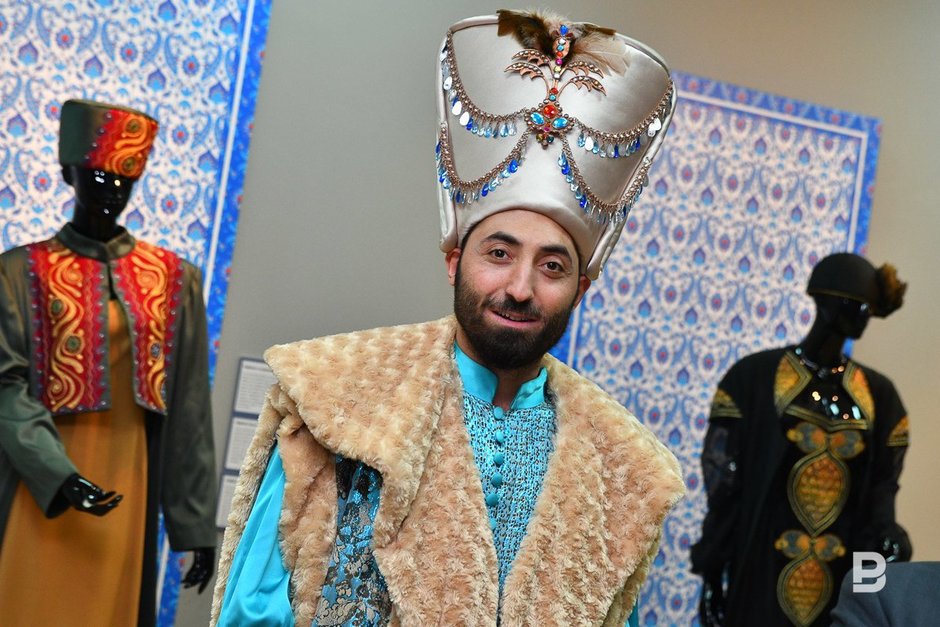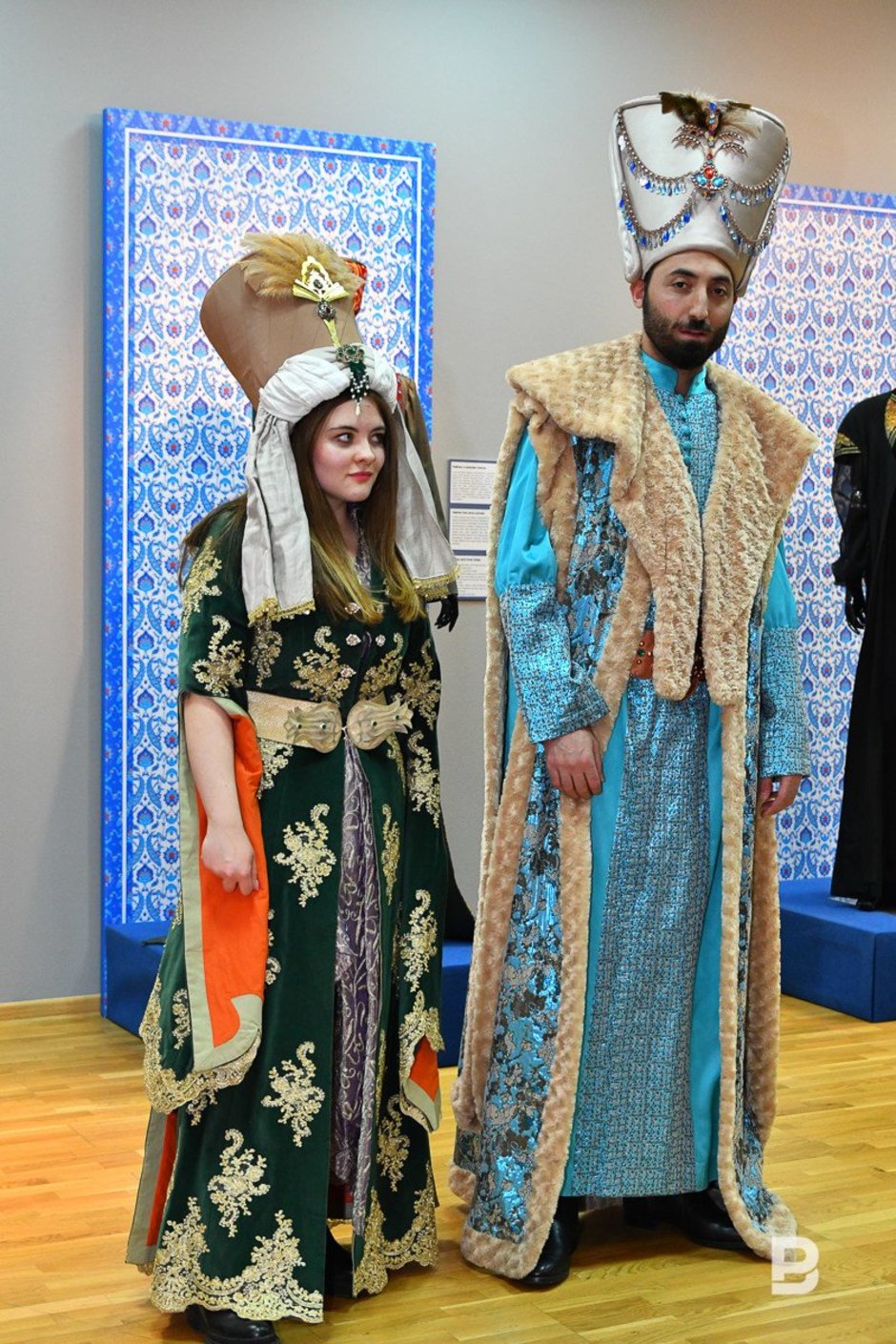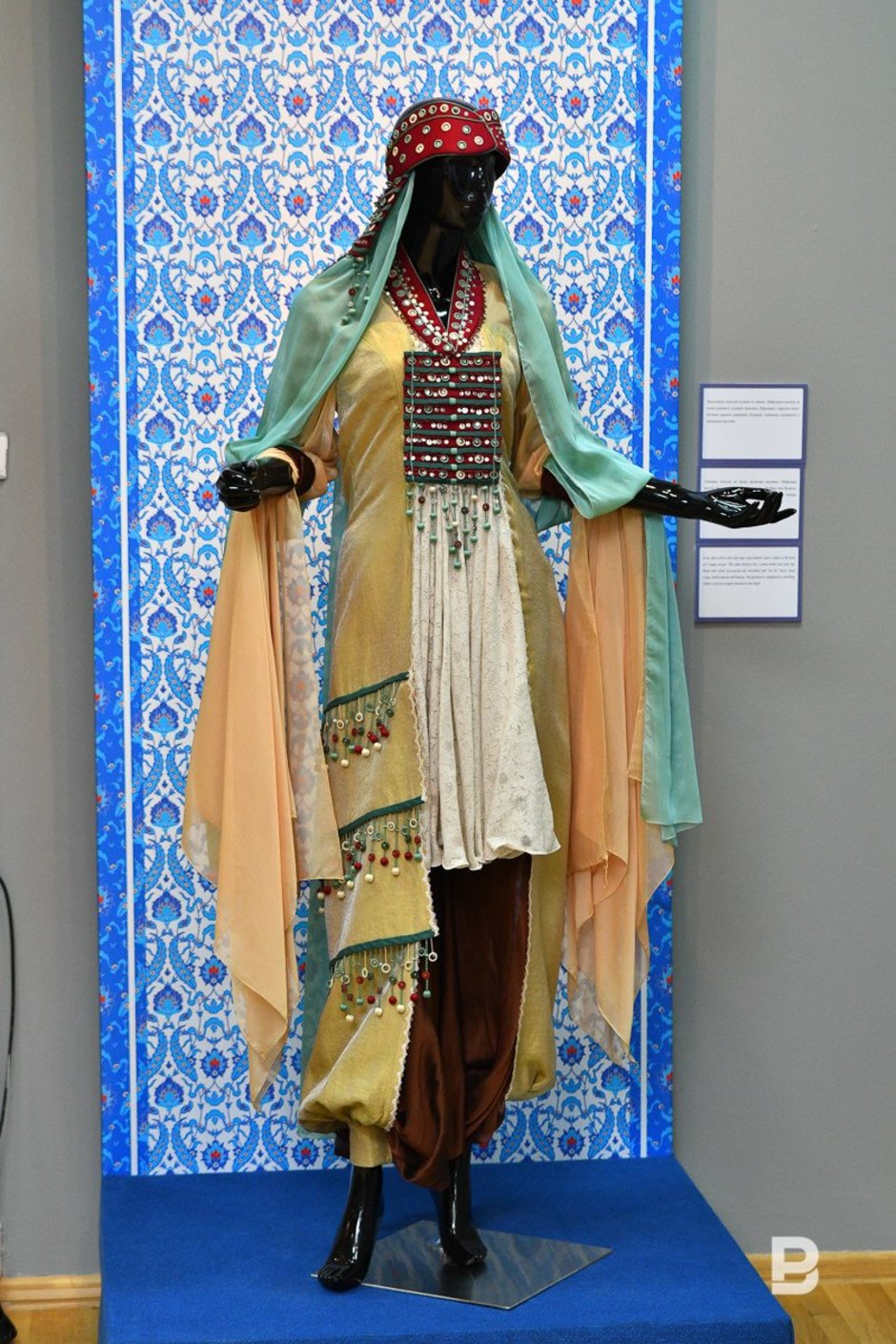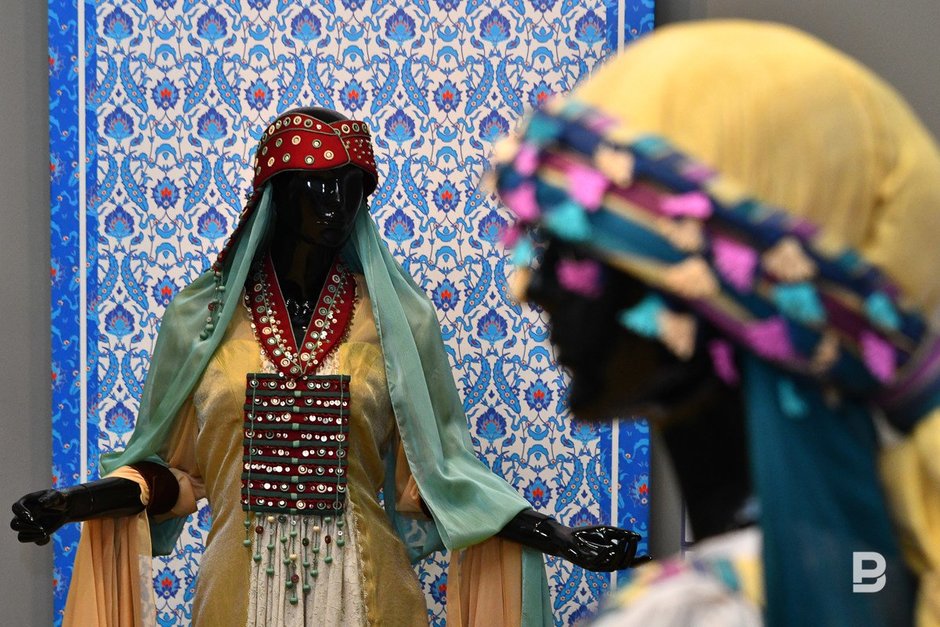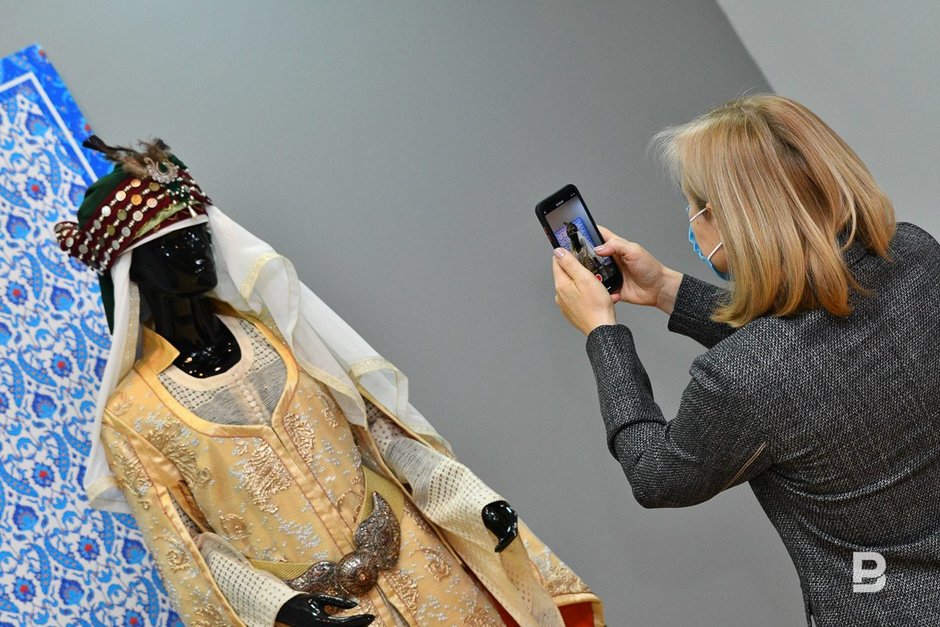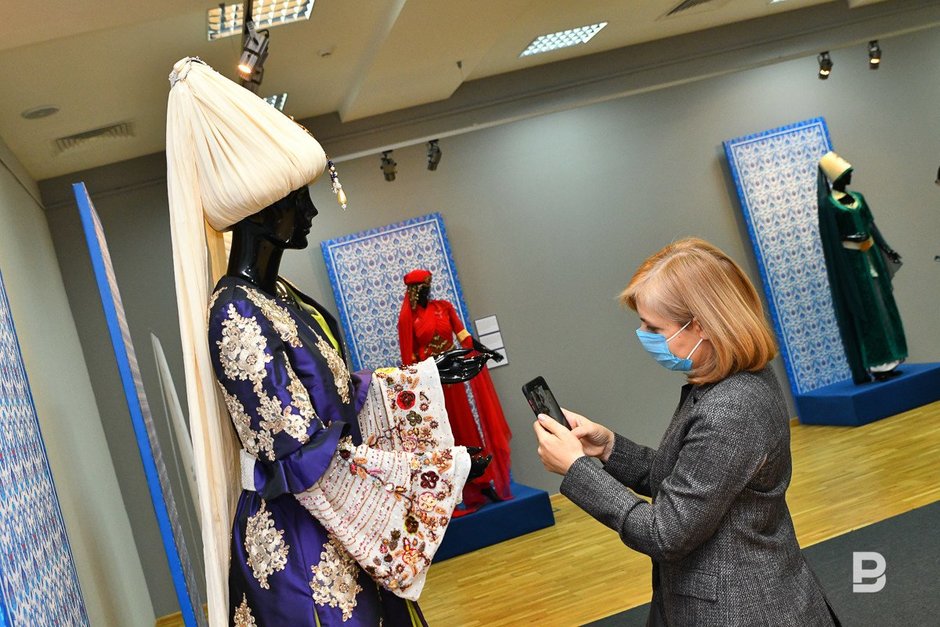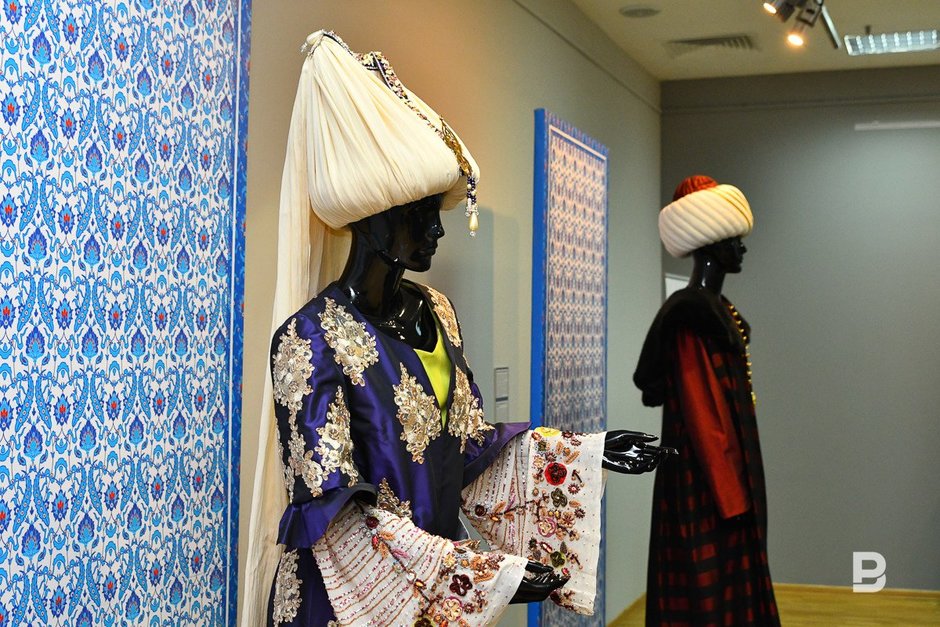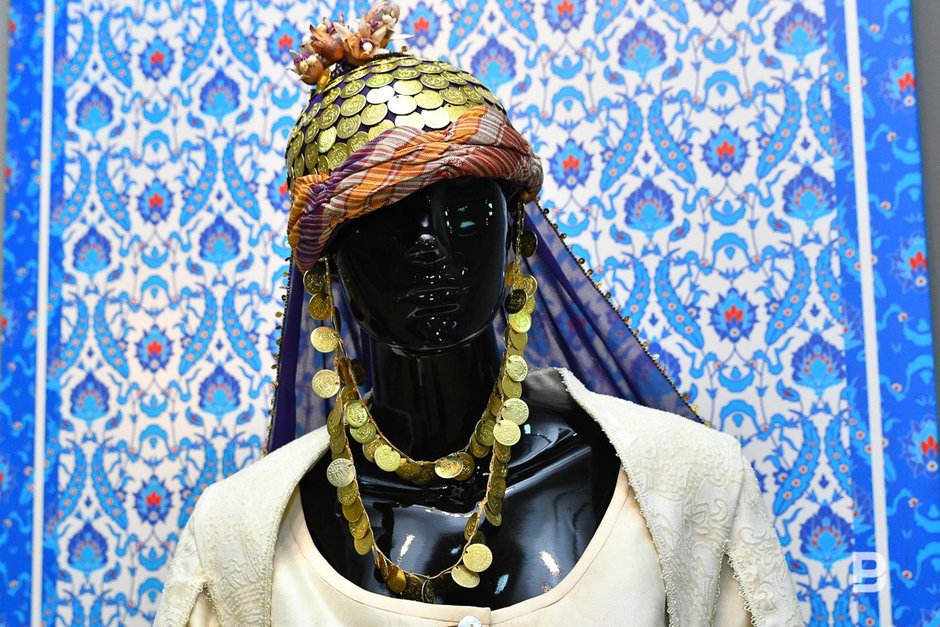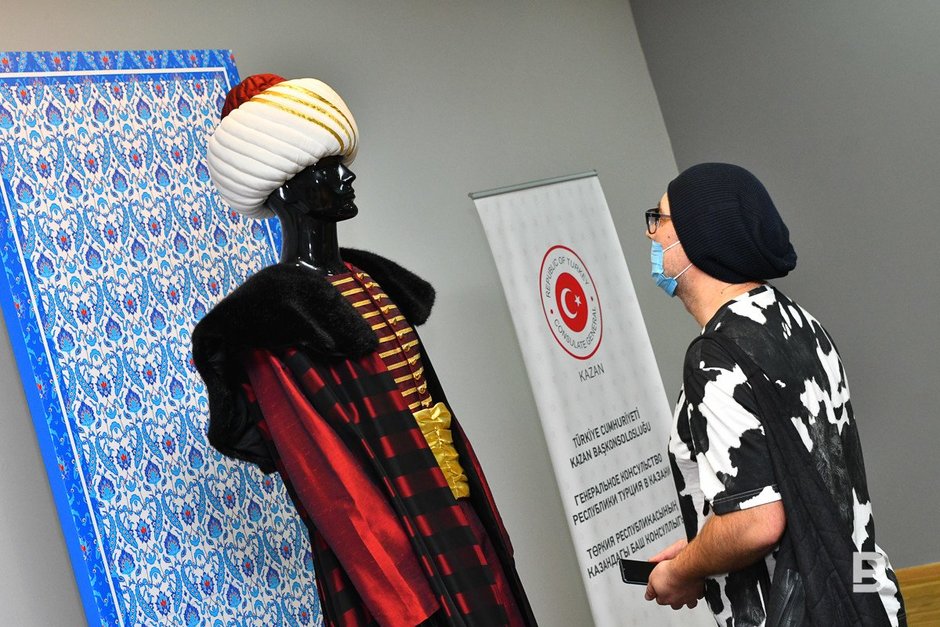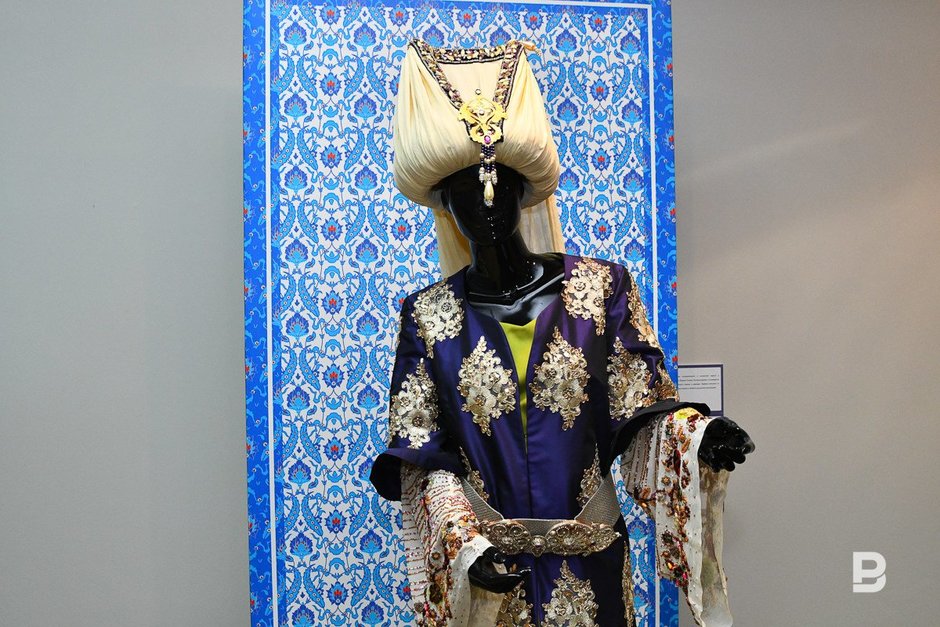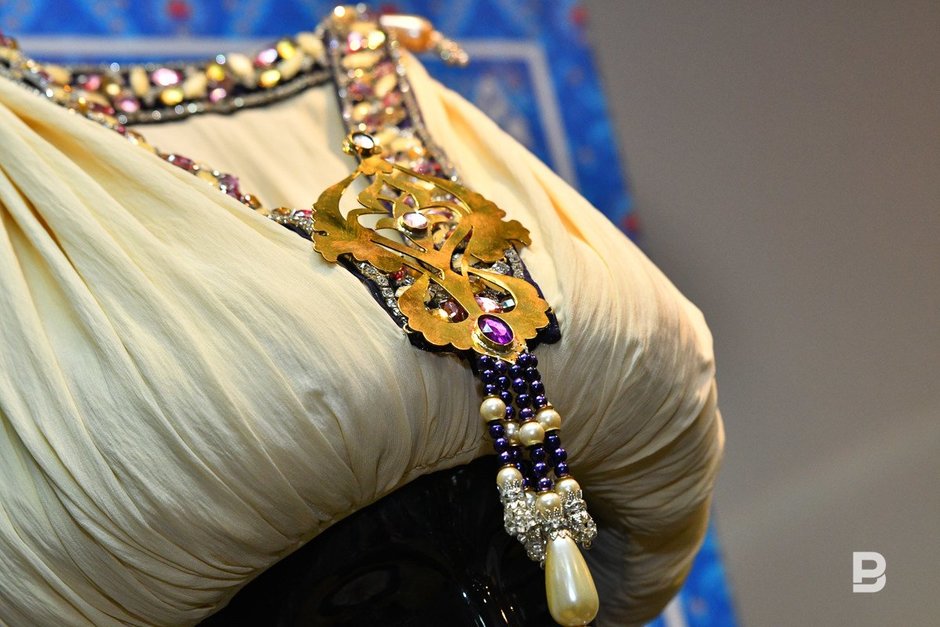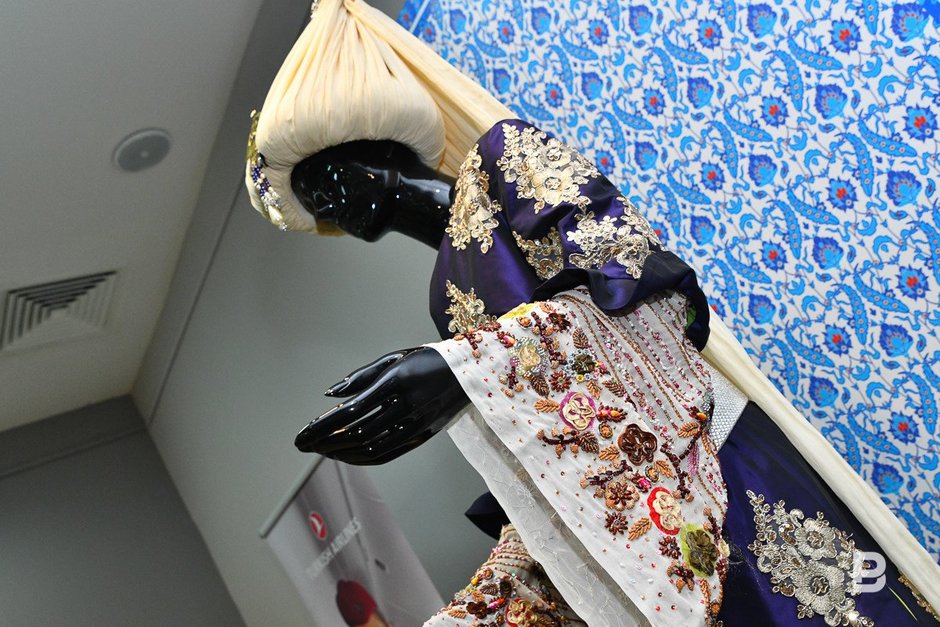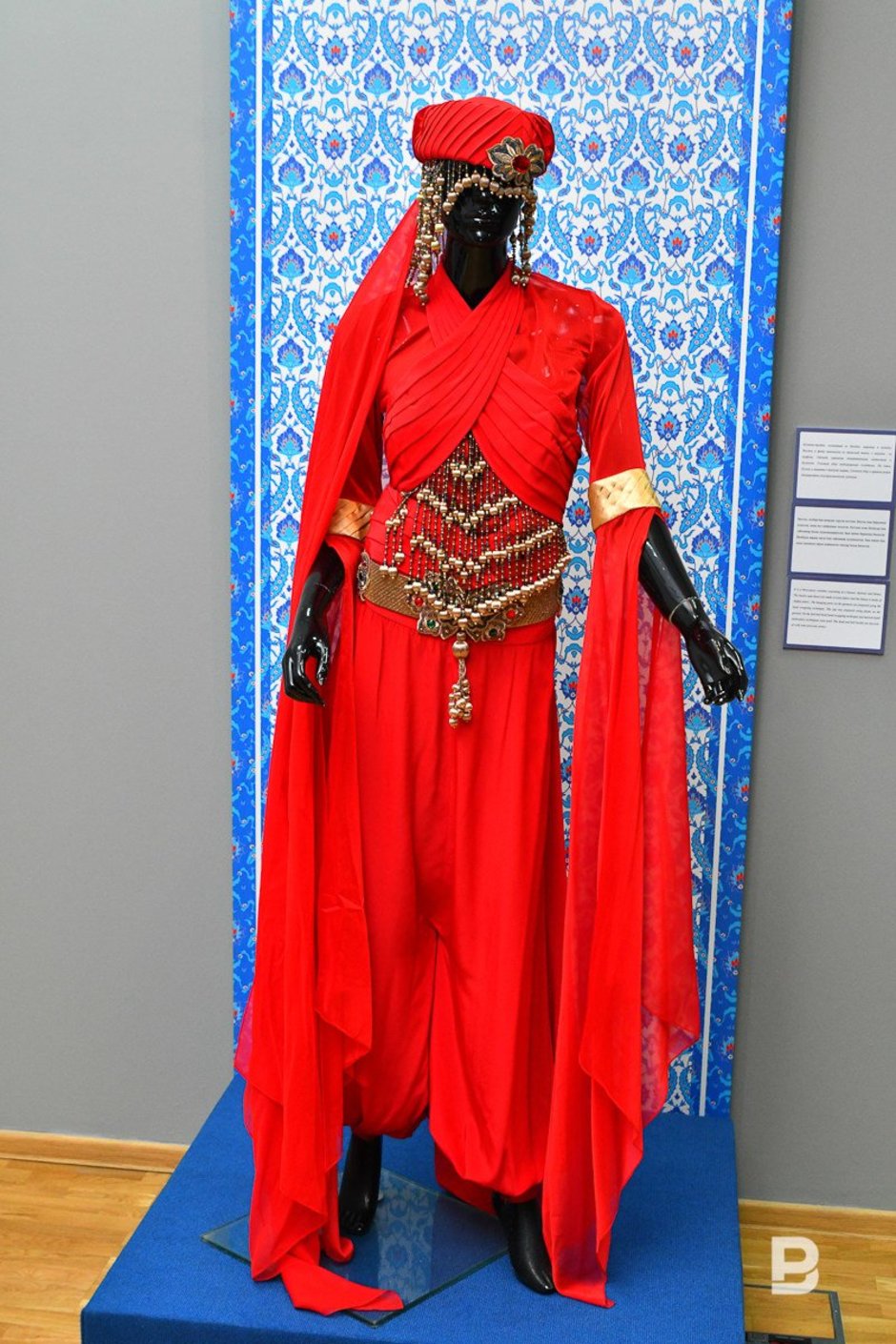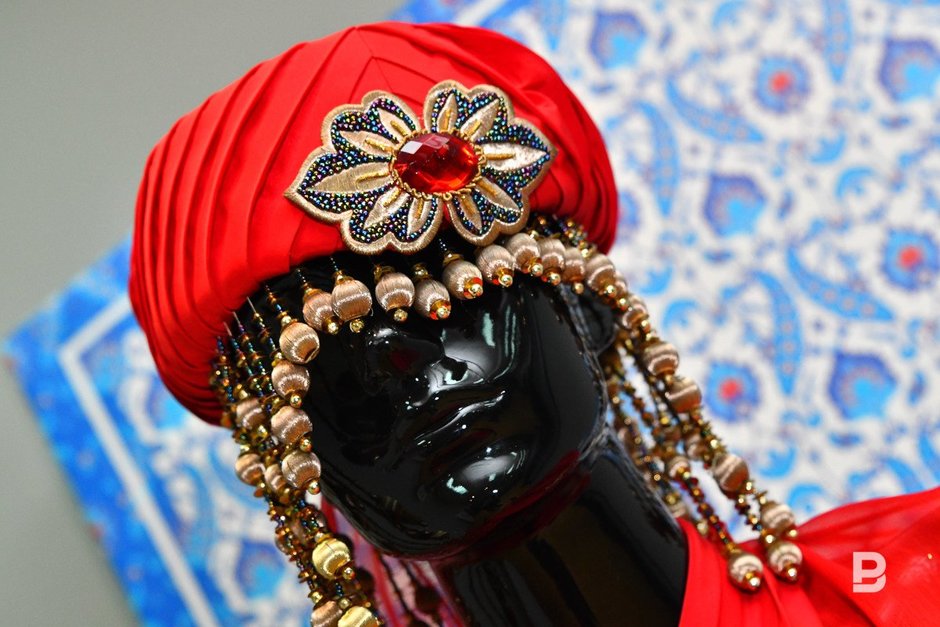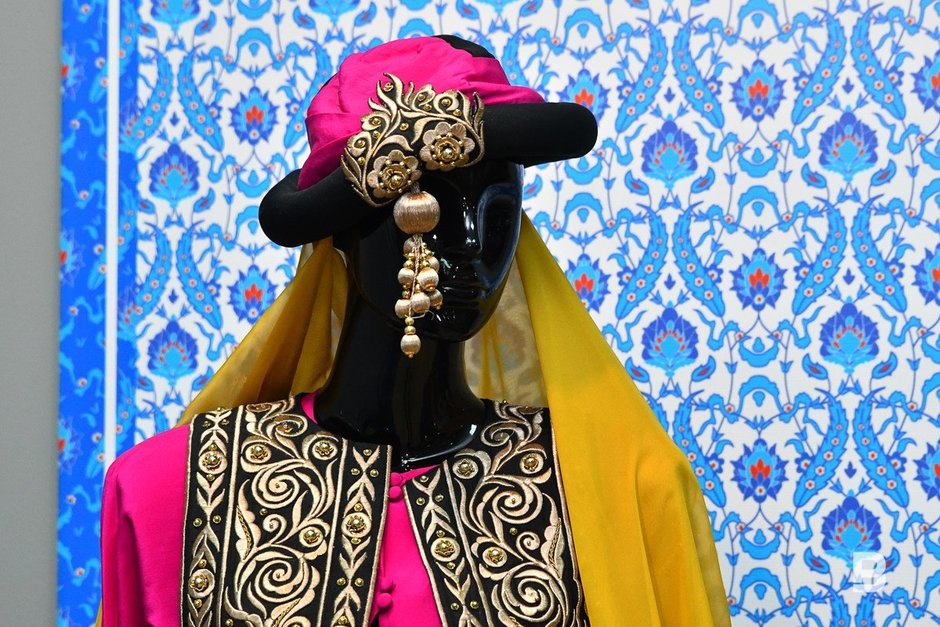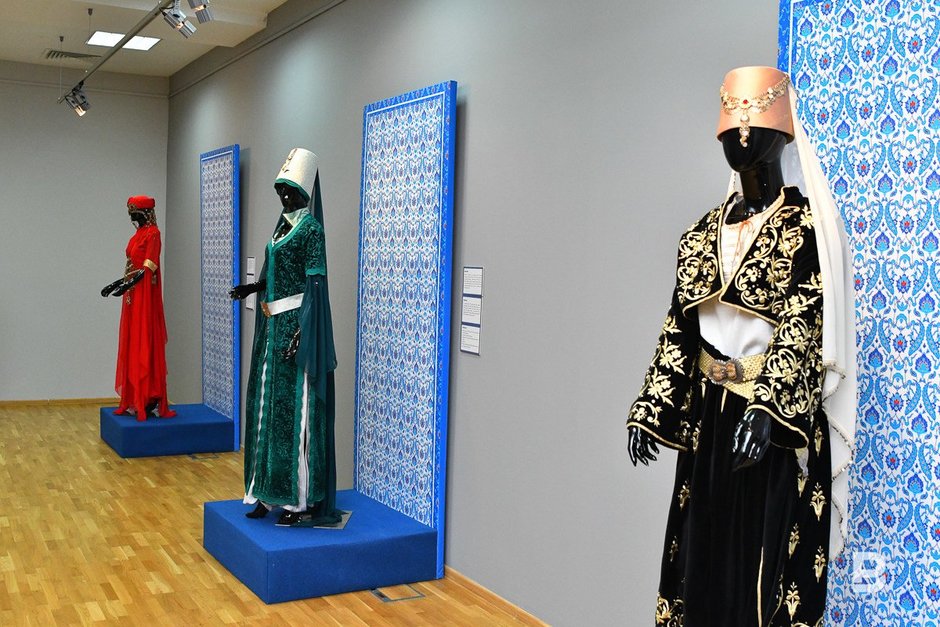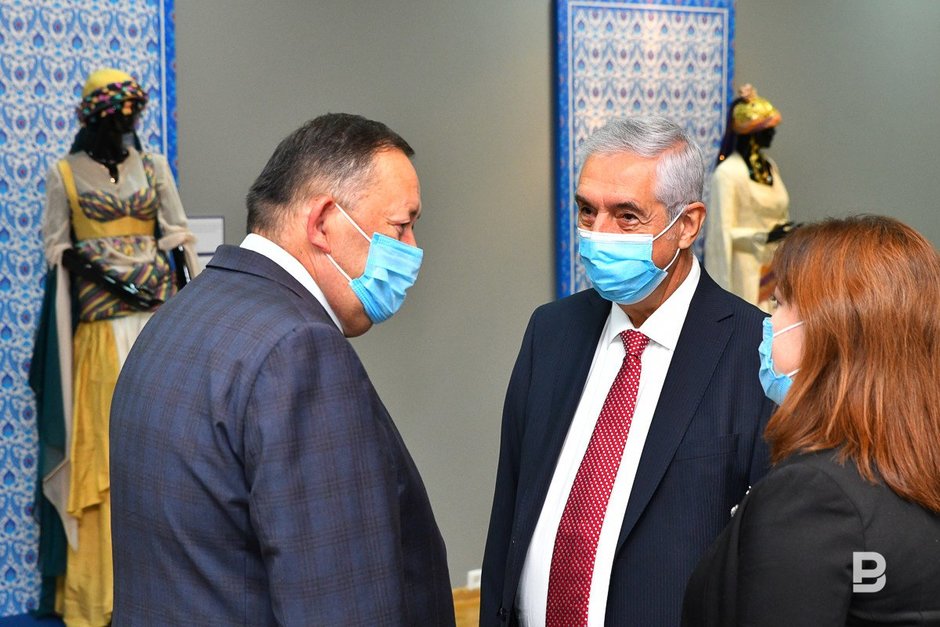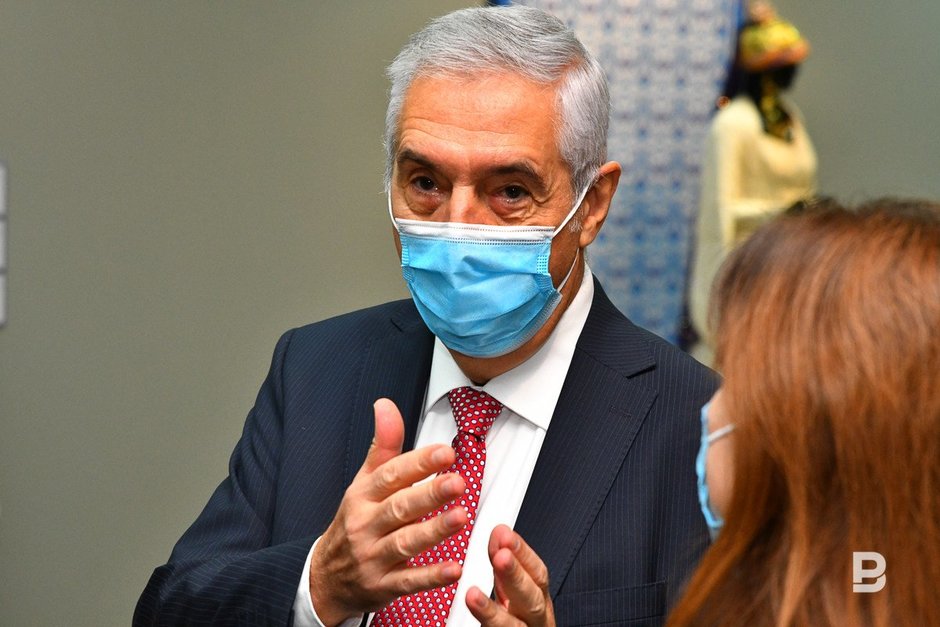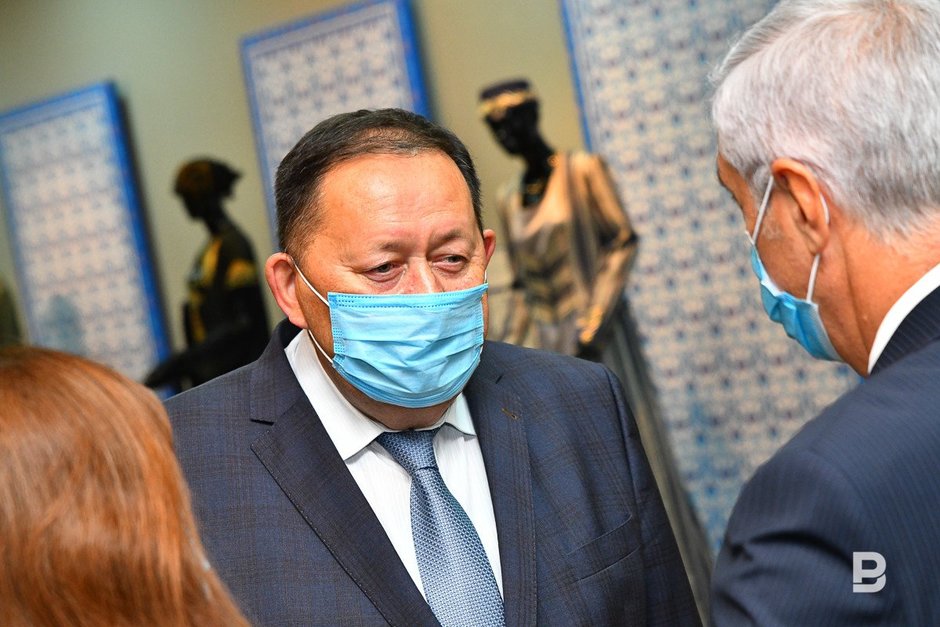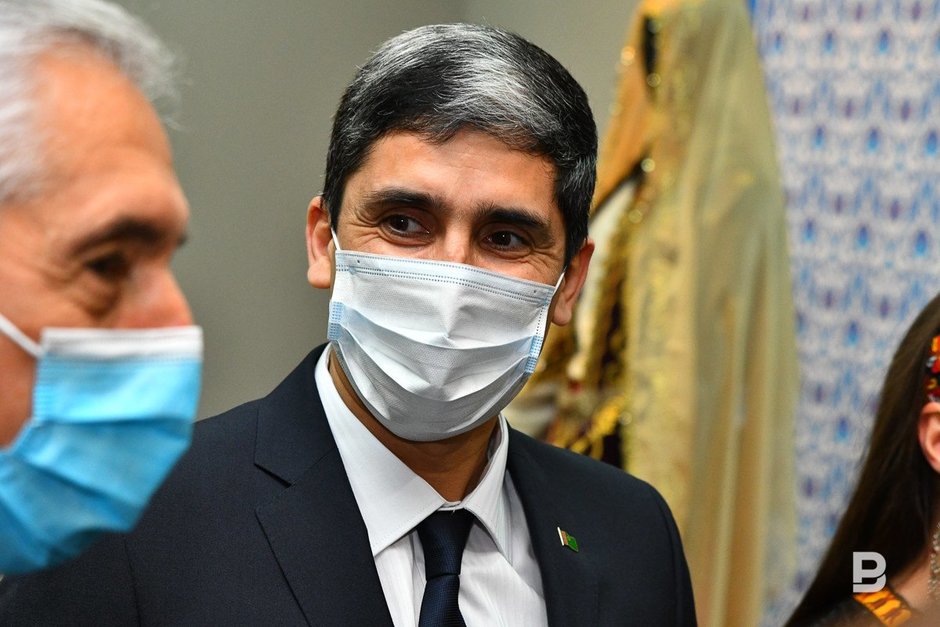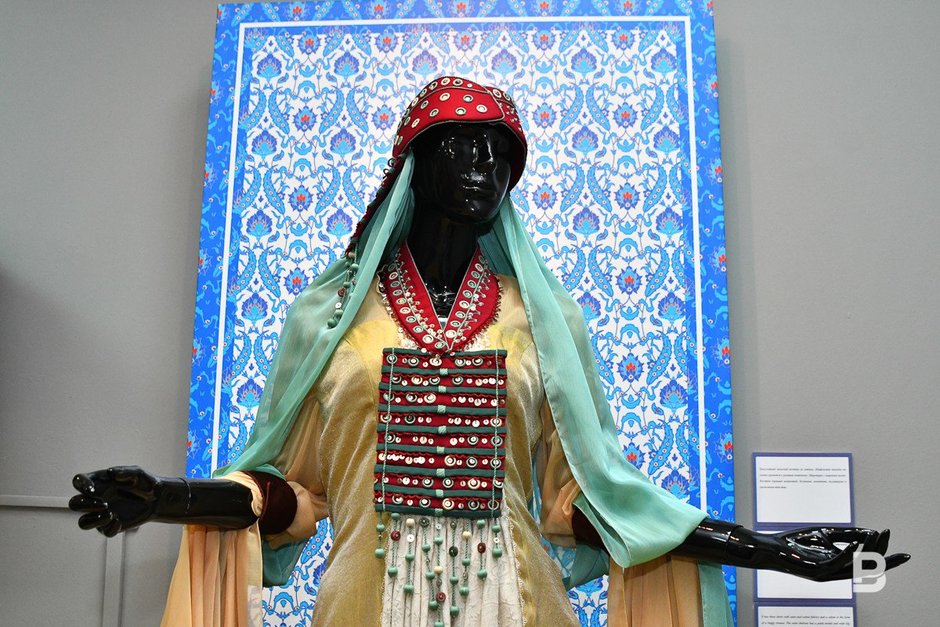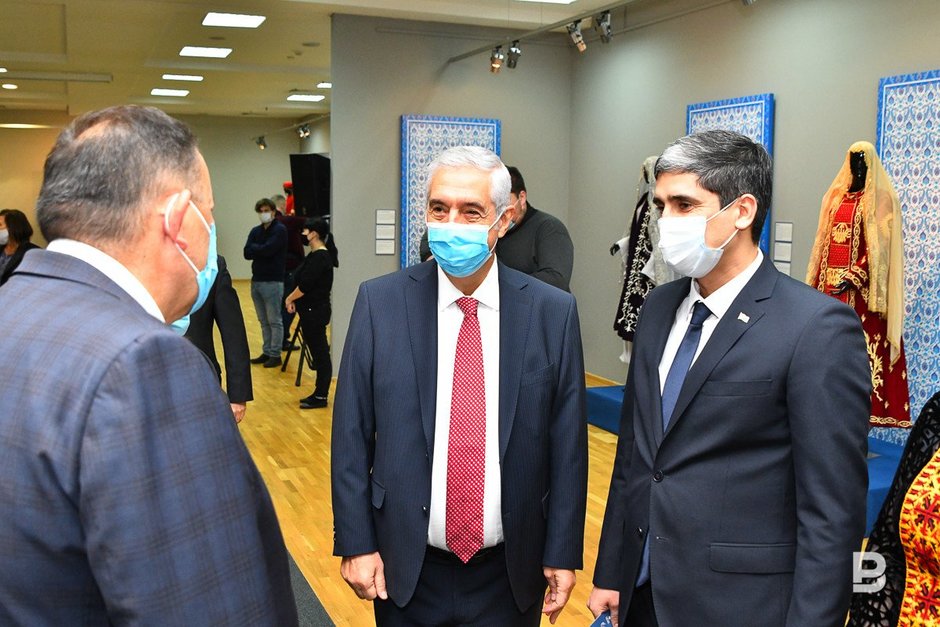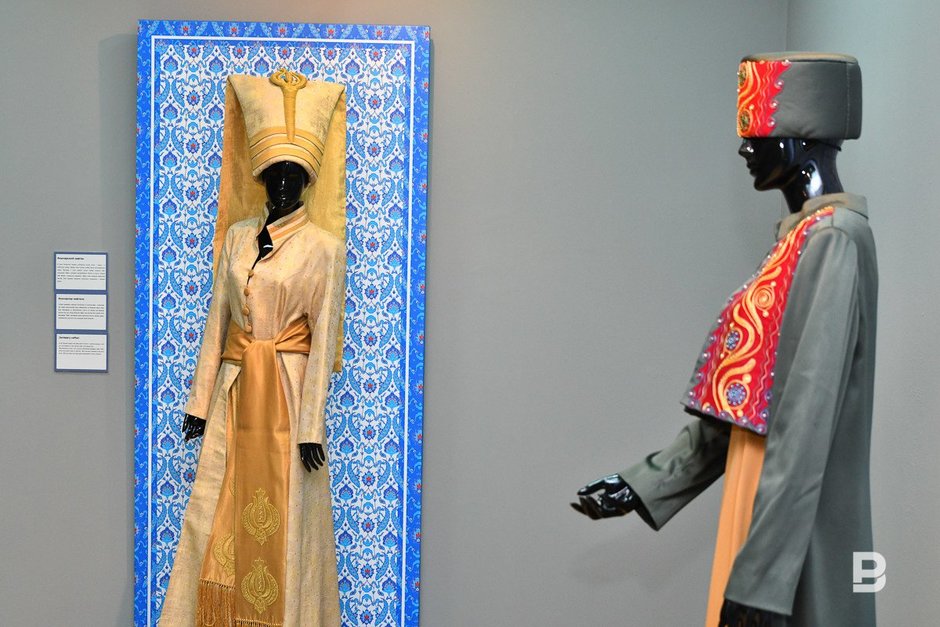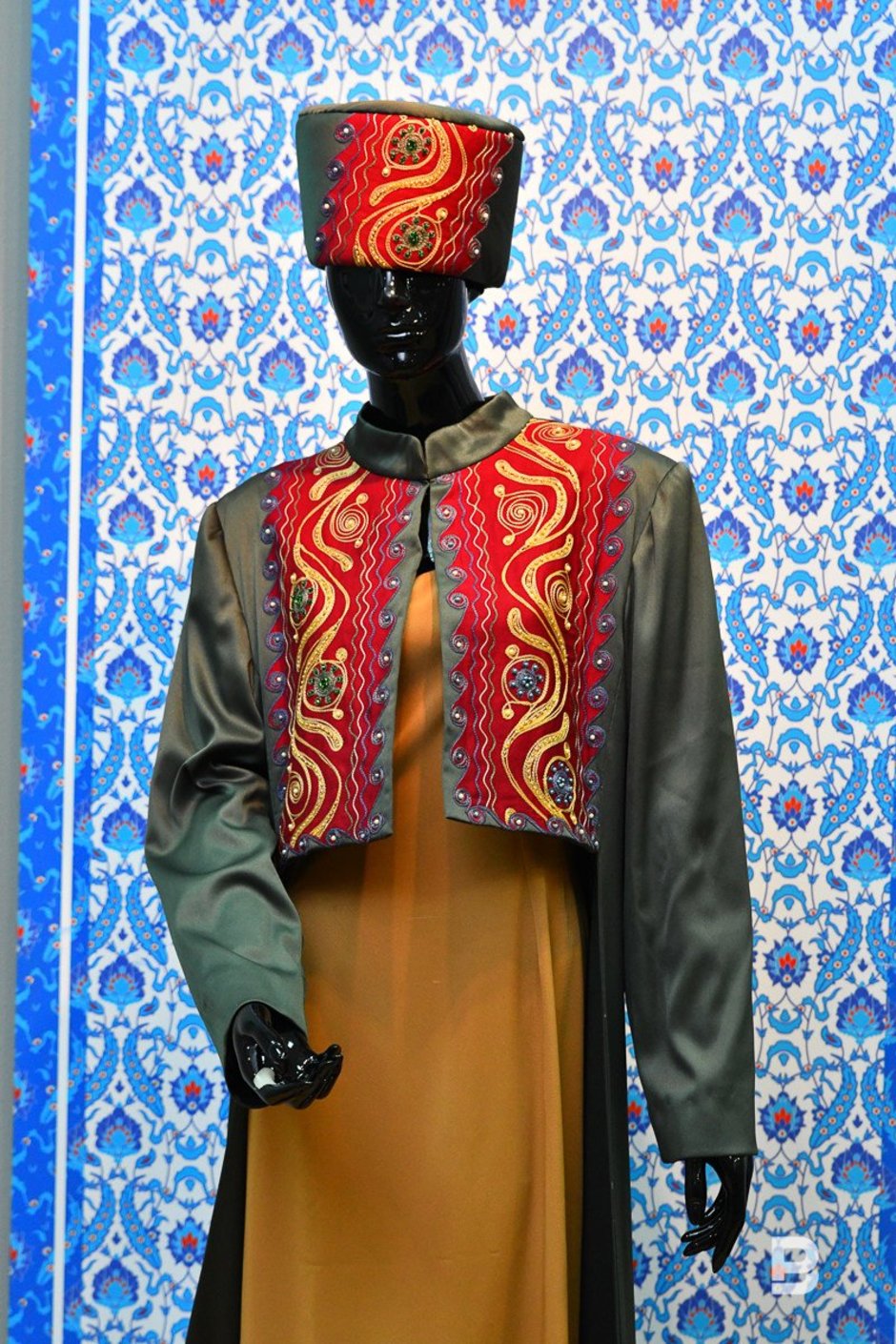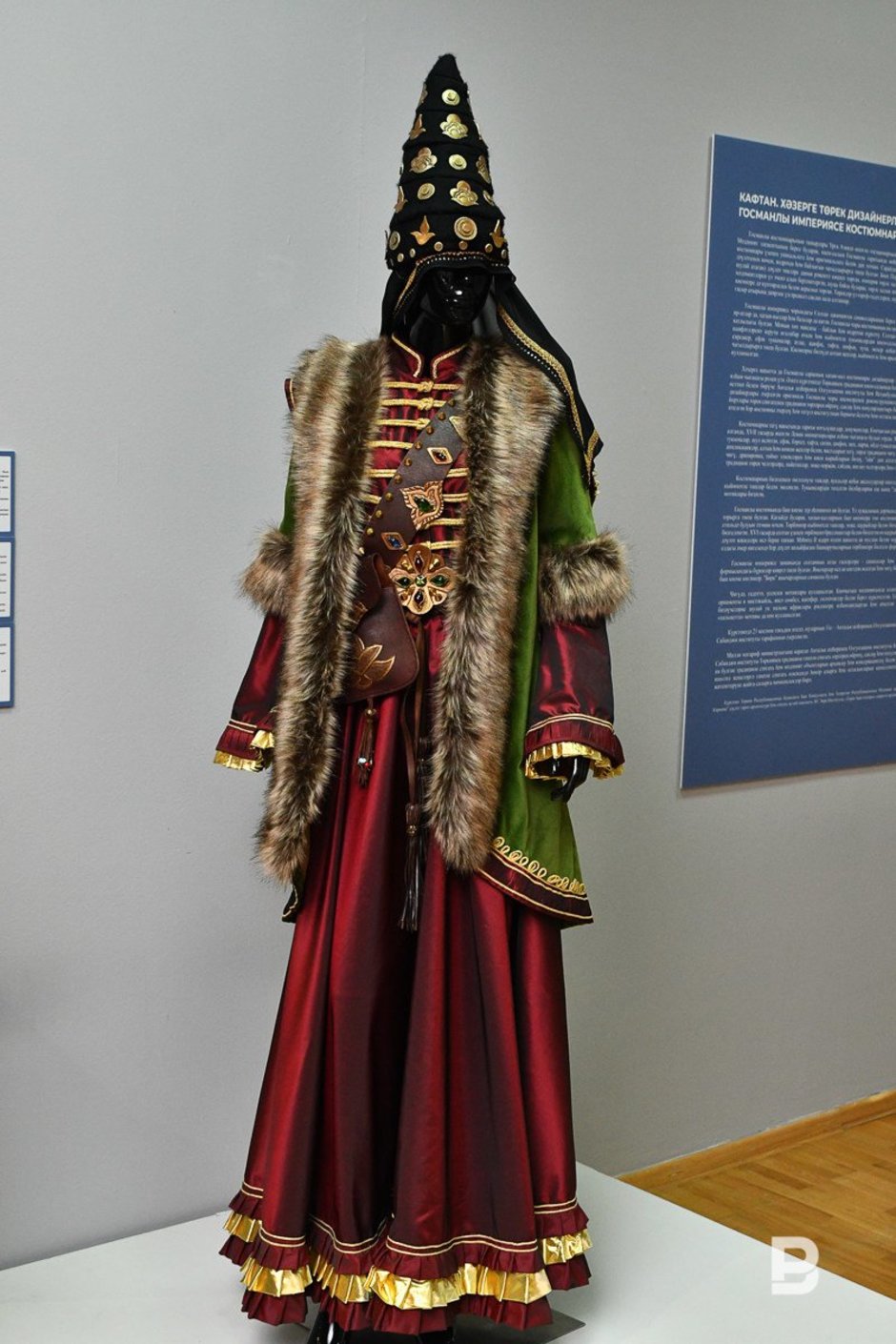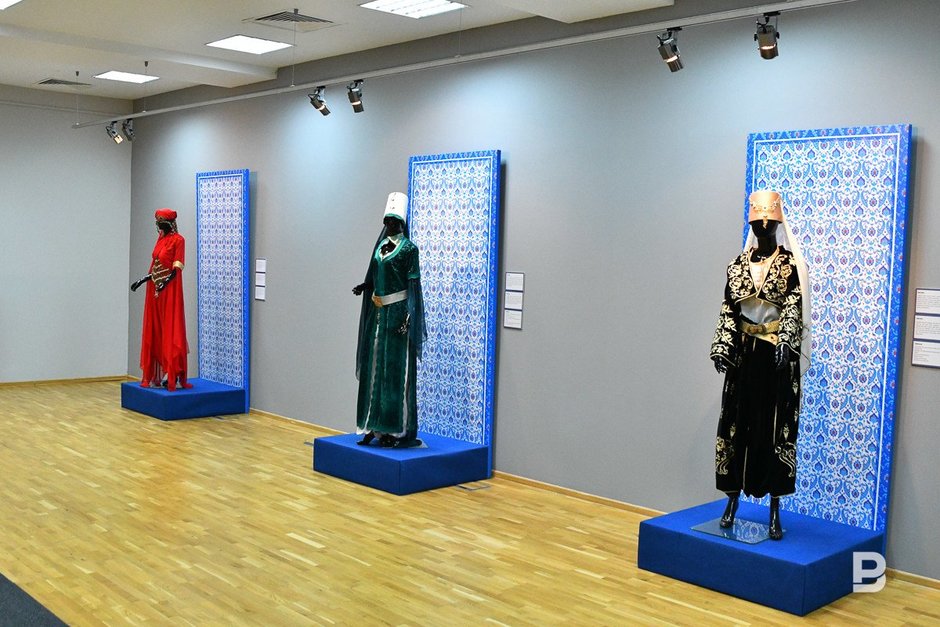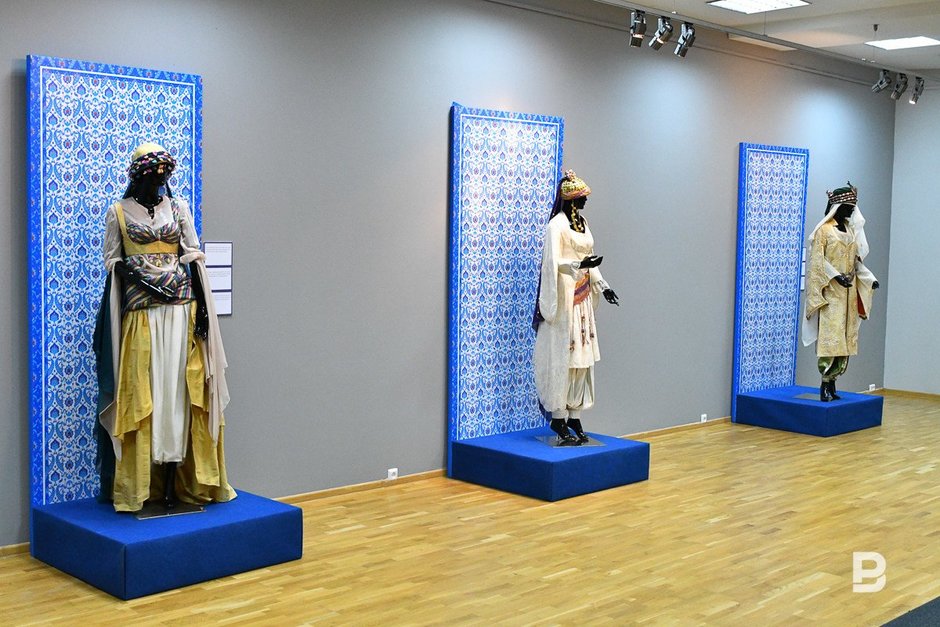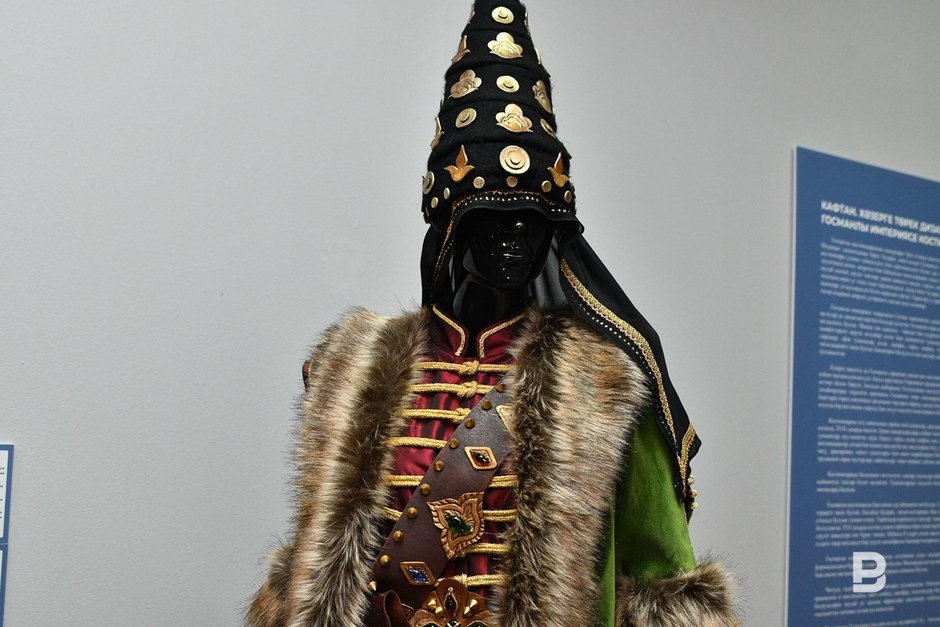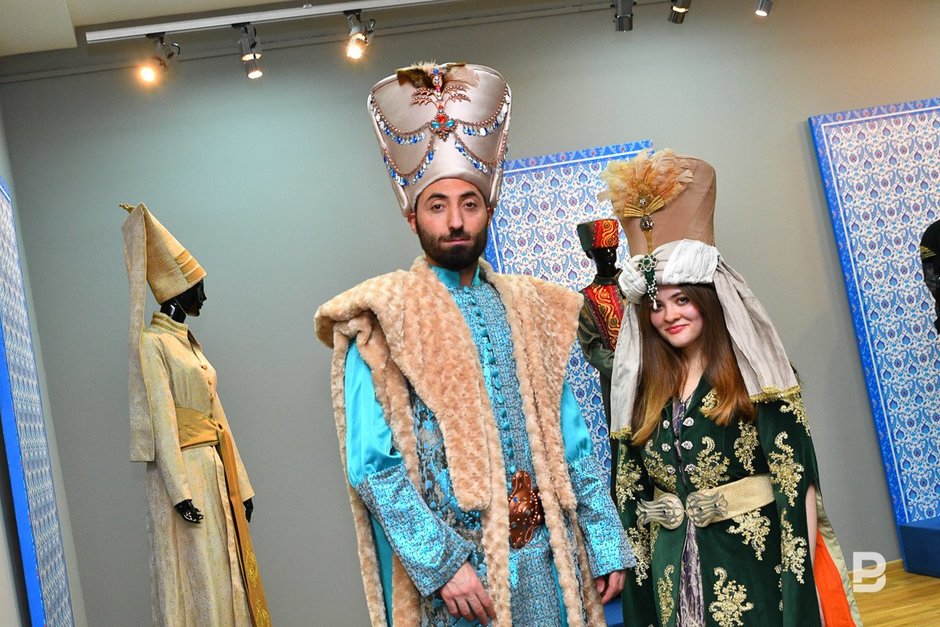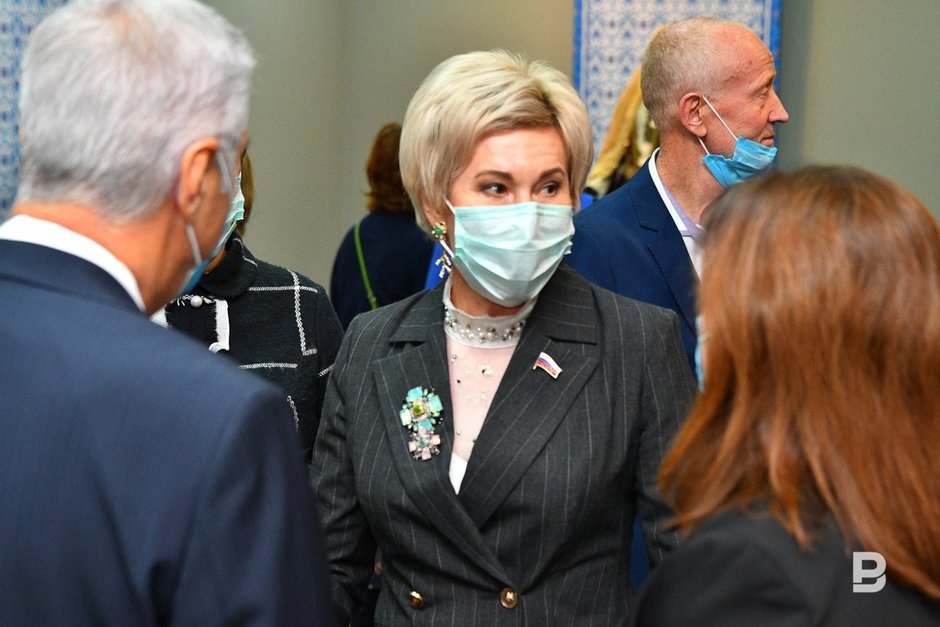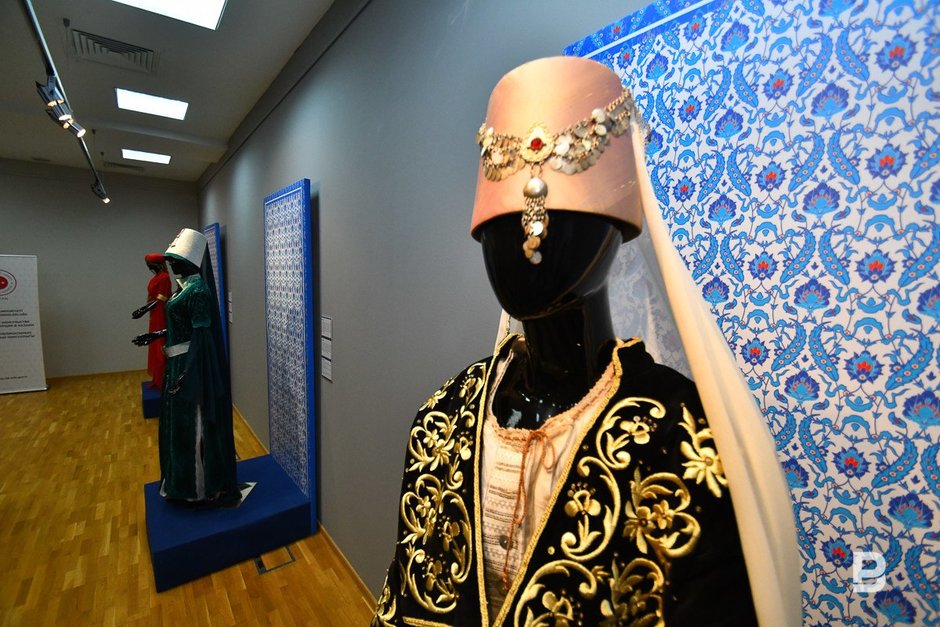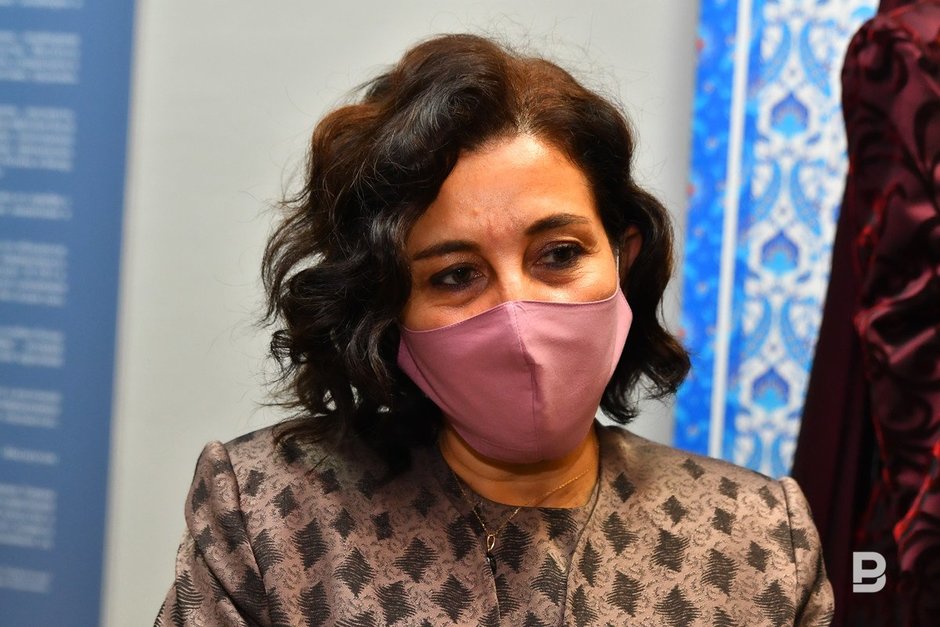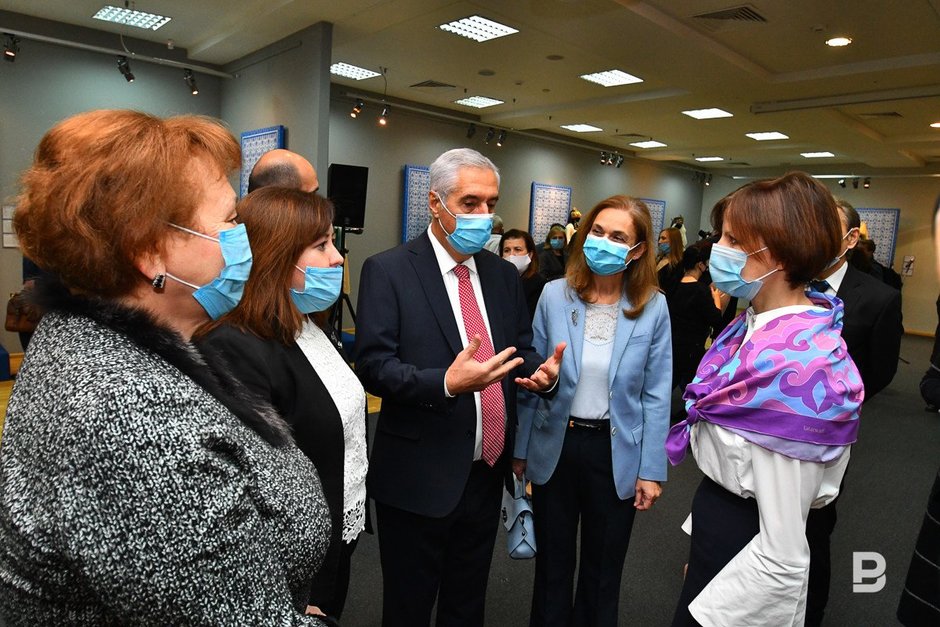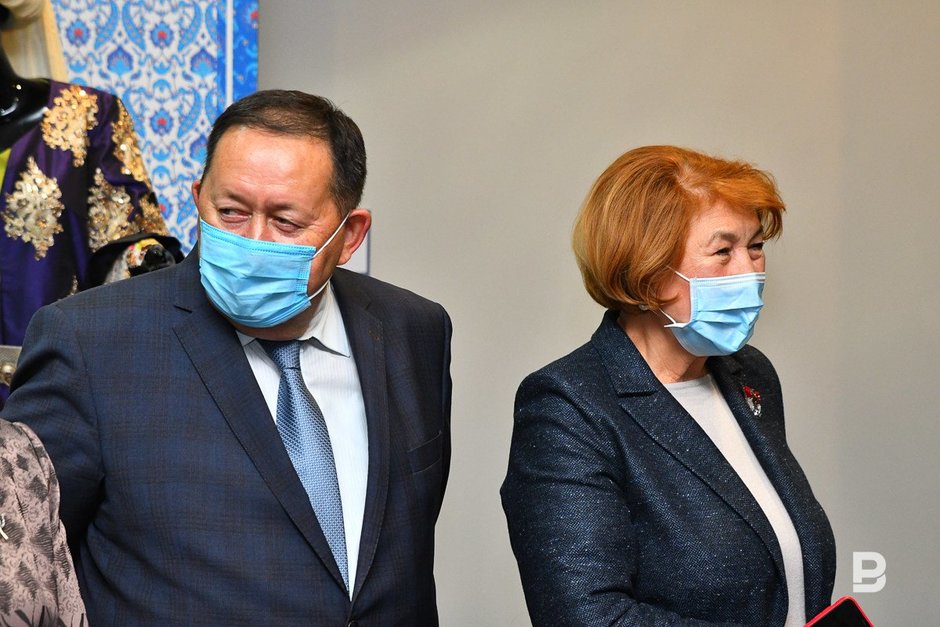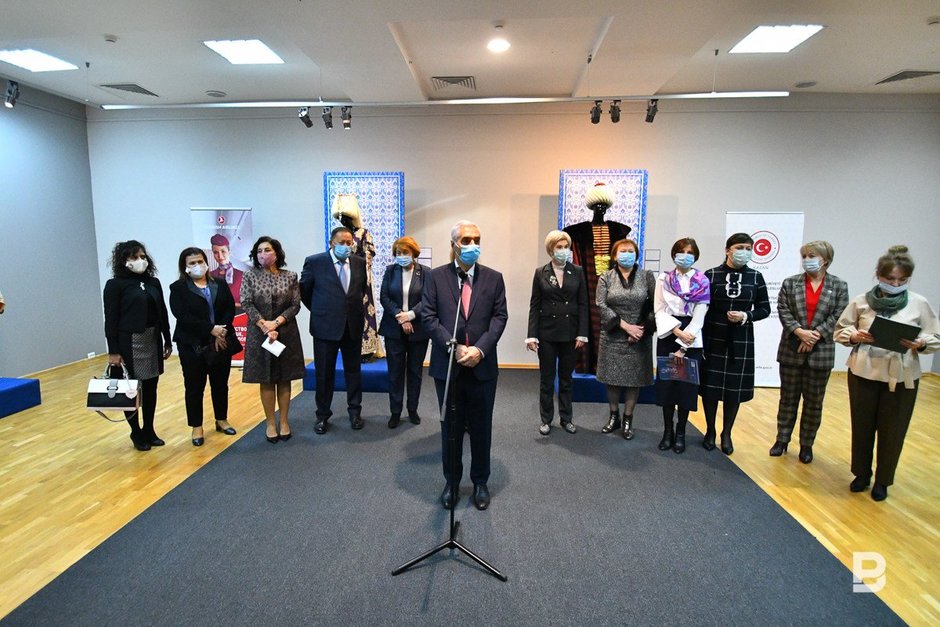Turkish designers recreate Syuyumbike's dress specially for exhibition in Kazan
The Kaftan.Costumes of the Ottoman Empire through the eyes of Modern Turkish Designers exhibition opened in the Manege exhibition hall
The Kaftan.Costumes of the Ottoman Empire through the eyes of Modern Turkish Designers exhibition opened in the Manege exhibition hall at the Kazan Kremlin museum-reserve on 14 November. The project was organised by the Turkish Consulate General in Kazan in cooperation with the ministry of culture of Tatarstan. The “magnificent century” is represented by twenty-one reconstructed costumes, including the garment of Mehmed the Conqueror and the costume of the beloved wife of the ruler Suleiman, Hurrem. The collection was supplemented with the dress of Queen Syuyumbike specially for the exhibition in Kazan.
“Magnificent Century” with delivery to Tatarstan
According to the Turkish Consul General in Kazan, Ismet Erikan, this exhibition was intended to warm the capital of Tatarstan, which was hit by cold weather. It is also (among other events) dedicated to the 100th anniversary of the establishment of diplomatic relations between Russia and Turkey. The exhibition was supposed to open in April, but due to quarantine, it had to be postponed for more than six months.
“Most of the costumes presented today were created on the warm land of Antalya. We can't say exactly how long it took to create each of them, but I can assure you that a lot of sweat and tears were put in this work. We show you modern replicas of costumes that were used by the nobility of the Ottoman Empire. We have also prepared a surprise for Kazan residents — an interpretation of the Queen Syuyumbike's dress. Certainly, this is not her real historical dress, but we have studied a lot of literature and records about the historical costumes of the Kazan Khanate. They relied on portraits of the ruler created by artists of different years. This is how we saw Queen Syuyumbike. All the details of her clothing, accessories, beads, and coins for hasite (breast jewelry — editor's note) were created exclusively by hand," said Mr. Erikan.
Actors in the vestments of those years “are working” at the exhibition. The consul explains this as a convenience for the audience: you can take a lot of beautiful photos with the actors. Speaking at the opening of the exhibition, Chairperson of the Public Chamber of the Republic of Tatarstan Zilya Valeeva laughingly admitted that she confused the tall actor in royal clothes with Sultan Suleiman from the Turkish TV series “Magnificent Century”.
There won't be fashion shows or treats in Kazan, but Syuyumbike — exclusive
The reconstructions of original Ottoman palace costumes were created by designers of the Turkish scientific and educational institute for research of traditional Turkish clothing and art — Olgunlashma Institute from Antalya and Olgunlashma Sabanci Institute. The head of department of continuing education at the ministry of national education of Turkey, Meral Altinkaya, told Realnoe Vremya that the exhibition has been “touring” in Russia for three years, for example, they saw it already in Moscow and St. Petersburg:
“We are glad that we have finally reached Kazan. In each city, the exhibitions turned out to be different in costumes and details. As a rule, they were accompanied by a fashion show — this is probably the most striking moment of the exhibition. There were also master classes, and treats to national dishes and drinks. Unfortunately, the pandemic made its own adjustments here, but we didn't have an opportunity to show all this. But specially for you, our designers have created a costume of the great ruler Syuyumbike, which can be seen immediately after entering the exhibition, to the right of the entrance. Each costume is a work of art, it is difficult to name its specific cost. Everything, down to the fabrics, was created and embroidered by hand — even lace, beads and glass beads were made by the masters with their own hands!
While conducting a tour of the exhibition, the representative of the Institute of Continuing Education of Antalya, Serpil Ergul, also paid special attention to the costume of the Tatar Queen. She said that her compatriots understand Syuyumbike as “the mother of all Tatar people”. The Queen's costume is made of silk, velvet, taffeta, satin, chiffon, fur, brocade and homespun fabrics. The dress is decorated with applications and stripes of gold and silver threads, Turkish traditional embroidery, gold embroidery and Turkish oya lace. An interesting solution was offered by Turkish designers, combining hasite with a lady's purse. According to the fashion of those years, the fur trim of the cape from the back is decorated with a massive “tassel”. Serpil Ergul highlighted that the headdress and the costume itself were created based on different portraits of Syuyumbike, so some discrepancy can be found. For example, the hat is made of felt with leather elements, decorated with a chiffon veil.
Janissary costume — also for women
Women of all ages at all times sought to look spectacular. Therefore, the exhibition is full of feminism: almost all costumes are women's, including the adapted costume of the janissary. During the Ottoman era, they wore a headdress called “berk”, which was made of white felt and decorated with embroidery. The horse guards, like the rest of the servants in the palace, wore different hats — high, also white and conical. The berk is the hallmark of the Janissaries, as is the belt with tulips.
Only one men's costume is presented to the audience of the exhibition — the outfit of Sultan Mehmed the Conqueror, who lived in the 15th century. According to Turkish reenactors, the sultan wore a sleeveless caftan of striped brocade with a faux fur collar and a red silk undershirt trimmed with gold braid and metal buttons. This costume is displayed in the centre of the entire exhibition along with the dress of Hurrem Sultan. Modern designers created it based on portraits of a European artist who depicted the ruler's wife only up to the waist. Therefore, the skirt designers “thought out” in accordance with the fashion of those years. The belt buckle of the suit is an exact copy of the accessories stored in Turkish museums.
At the exhibition, you can also see two outfits of Balkan women — the thing is that the lion's share of the area of the Balkans was under the rule of the Ottomans several centuries ago. For example, the green costume of Pirpiri consists of a homespun shirt, the edges of the gate of which are embroidered with Turkish lace, and satin trousers.
The exhibition is open in the Manege for a whole month.
